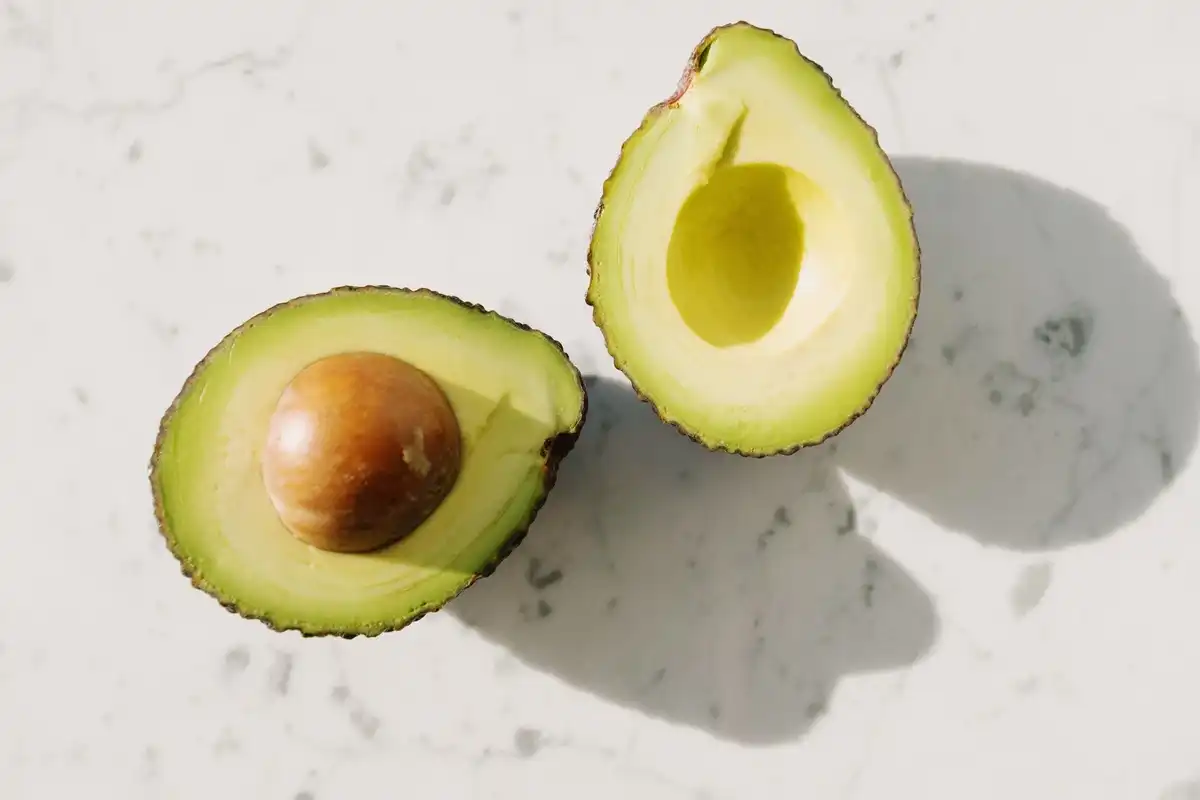What Can You Eat After Root Canal | 21 Post Root Canal Foods


Wondering what food you can eat after root canal treatment? If you’re planning on having root canal treatment (endodontic therapy) anytime soon—or getting any other major dental work completed for that matter—you’ll want to make sure you’re eating the appropriate foods during your recovery. The last thing you want to do is eat something you shouldn’t and irritate your mouth.
Even though getting a root canal is basically the same thing as getting a really big filling in your tooth, there are still some foods that are better to eat and certain ones you should avoid.
Root Canal Eating Guidelines
For root canal treatment or any basic dental procedure, always follow the verbal and written instructions that your dentist gives you. Or in the case of a root canal, your endodontist. Since root canal treatment is usually broken up over the course of two appointments, you need to make sure you’re not eating anything that could mess up the first phase of treatment or delay the final placement of your crown.
Foods to Eat After a Root Canal Procedure
Ok, so what IS safe to eat after a root canal? Basically, you want to stick to soft foods and avoid anything that isn’t sticky, crunchy, or too hard. You don’t want to pull anything off or apply too much pressure to your tooth, period.
Avoid anything that requires chewing for at least a few hours, that is, until your local anesthetic wears off. For some people that can take about 3-4 hours. Chewing with a numb cheek or lips can put you at risk for accidental soft tissue trauma and nobody wants that. Until then, you can drink something a little more filling like a protein shake or chocolate milk, as long as you’re careful not to let it dribble down your face (since you can’t really feel much of it.)
As the feeling starts to come back in your mouth, you can start to transition to softer, easier-to-chew soft foods. If you’re at a loss of what to stock up on, here are some great ideas to get you started:
1. Soups
You don’t necessarily need to stick to a liquid diet, but soups can be a little more savory and filling than a shake, plus you don’t have to worry about biting down on anything that’s going to break a tooth. Just let it cool off a little bit, first.
2. Greek Yogurt
Sugar-free yogurt (sans the granola, of course) is another filling, soft food. Since it comes in a variety of flavors you can keep your tastebuds happy even if you’re not quite in the mood for a big meal just yet.
3. Eggs
Quick and easy to make, eggs give you something solid for your stomach and they don’t require a lot of chewing. Scramble 2-3 of them up and salt and pepper them to taste, and you’ve got a dentist-approved post-root canal meal.
4. Avocado
Foods like avocados are rich in healthy fats, avocado gives you a soft solid to snack on. Eat it alone or mix it in with your eggs. Tip: buy your avocados a couple of days before your root canal and leave them on the counter so that they’re perfectly ripe!
5. Mashed Potatoes
Whether you prefer homemade mashed potatoes or the instant kind, you can make these as thick or thin as you like. They’re a great option for any post-dental procedure, including oral surgery. Make sure your mashed potatoes are not too hot, we don't want any burned mouthes!
6. Applesauce
Hate cooking? This one is quick and easy. You can buy the individual serving cups or one large jar. Applesauce is perfect if you’re a little queasy from sedation or pain medication, as it can help to settle your stomach.
7. Bananas
Bananas are also part of the “BRAT” diet (bananas, rice, applesauce, toast) that’s great if you're nauseous. It’s probably best to mash your bananas or slice them up to make them easier to eat, especially if your jaw is a little sore right after your dental procedure.
8. Smoothies
Have a blender handy? Buy some frozen fruit, OJ, yogurt, or protein powder and make some pre-packed smoothie bags to pull out whenever you get hungry. The cooler temperature helps with any sore gums or tender injection sites.
9. Ice Cream
You can’t ever go wrong with ice cream. Especially after dental work like extractions or wisdom tooth removal. If you prefer to stick to soft, cold foods for a couple of days, ice cream is a staple to keep in the freezer!
10. Hummus
Even though you don’t want to be dipping any carrot sticks or pitas into hummus (they would be a too hard or crunchy) it’s ok to eat the hummus with a spoon. The thicker texture will help you feel a little fuller than you might with ice cream or applesauce.
11. Oatmeal
Are you ready for a little more texture than what eggs have to offer? Oatmeal is healthy, gentle, and filling. Plus, it’s packed with fiber! If possible, try to avoid artificially flavored and sweetened oatmeal packs, or at least cut them with plain oats.
12. Quinoa
Like oatmeal, quinoa is healthy and satisfying. Especially if you’ve got the right seasoning added! Just make sure that it’s cooked perfectly, otherwise, you might find little pieces of quinoa getting caught around your temporary crown (and those spaces can be slightly difficult to floss.)
13. Fish
When you feel ready to start eating meat again, it’s best to not jump right into steak or chicken strips. But fish is soft and flakey, so it’s perfectly fine. As a bonus, fish is packed with Omega-3 fatty acids, which are great for promoting good gum health and combating periodontal disease.
14. Protein Shakes
You can usually get protein shakes in flavors like vanilla, chocolate, and strawberry. There are also fruit flavored powders out there you can buy to mix with water. Protein is naturally filling so it can help ward off hunger or act as a meal substitute when you’re a little weary of chewing anything just yet. When in doubt, just pick up a pack of meal replacement shakes at the grocery store to have as a “just in case.”
15. Soft Cheese
Cottage cheese, goat cheese, and other crumbly-type soft cheeses are completely safe foods to eat after a root canal. Just don’t eat hard cheeses or anything sticky/crunchy like nachos.
16. Peaches (Ripe Fruits)
Softer fruits that have been ripe for a few days or that are diced and canned are safe for eating after a root canal. You can also put them on your list if you need a tooth extraction, dental implant, or other common dental procedures. Peaches and strawberries tend to be a bit softer than other fresh fruits, so try to start with those first.
17. Tofu
You can get tofu in varying textures and some are softer than others. It’s a great meat substitute, even if you normally don’t eat a vegan diet. If you’ve never cooked tofu before it’s easy: press the water out, dice it up, and sauté it in a pan.
18. Ground Beef
As you’re getting ready to transition to firmer foods and you’re craving meat, start with some ground beef. Some good old Hamburger Helper is just fine about right now. You do want to make sure that the meat isn’t too gristly and that there aren’t any little bone fragments anywhere, so look it over while you’re browning the meat before you mix anything else into it. Ground turkey is ok, too!
19. Beans
Black beans, kidney beans, ranch-style beans…let your imagination run wild. Beans—like meat—are packed with protein (plus fiber) so they’re a little more filling than some other food choices. Since they’re fairly soft, you can eat them from day one after your root canal. Add a little seasoning to them and you’ve instantly got a root canal-safe dish that’s Mexican, Italian, or whatever theme you’re feeling.
20. Broth
Warm broth is great for sipping on when your mouth is sore right after dental treatment. Just make sure it’s not too hot because you don’t want to accidentally burn your tongue or the roof of your mouth. Normally your dentist recommends waiting to drink anything until you get some feeling back in your mouth (just because of the mess factor,) but if you’re careful it’s completely fine.
21. Couscous
Even though it’s a lot like quinoa in terms of texture, couscous is a little softer and has more carbs in it. So, if you’re craving bread but aren’t ready for the firm/sticky texture just yet, couscous is a safe alternative. You can usually buy ready-cook packs in different flavors at the grocery store so that it doesn’t feel like you’re eating the same food all day every day.
Foods to Avoid After a Root Canal Procedure
Remember, you probably have some type of temporary restoration like a crown or filling on your root canal tooth. You do not need to be eating anything that could even potentially irritate the gums or compromise your exposed, prepped tooth. You’ve only got to make it about two weeks, so it won’t be the end of the world! Here’s what you need to plan to take out of the menu until your permanent crown is seated.
Here are 5 foods to avoid after a root canal.
1. Hot Foods
Hot meals are a good food to avoid after your root canal. Your tooth won’t have a vital nerve inside of it anymore, but it’s best to not risk sensitivity to major temperature extremes.
2. Spicy Foods
Your gums can be a little more sensitive after a root canal, and spicy flavors could irritate them a little bit more than normal.
3. Sticky Treats
Anything sticky should be avoided like the plague. If it’s sticky, it can pull off your temporary crown or filling. Don’t do it, try to avoid
4. Chewy Foods
Even if the food isn’t technically sticky but you have to chew it a lot to eat it—like a firm bread—it could still create a suction around your temporary crown and pull it off. Chewy foods are great to avoid after a root canal.
5. Hard Foods
Hard foods require too much pressure to chew. If you’re exerting too much pressure on your tooth, the brittle tooth enamel might break down before your dentist has a chance to put the crown over it. Try not to bite or chew on it too much. Stick with the soft foods for a bit.
Talk to a Dentist
What Can You Eat After Root Canal
Getting a root canal on your tooth is one of the best ways to avoid an extraction. But you need to make sure you’re eating the right foods immediately after your endodontic procedure, otherwise you run the risk of complications. Eating soft foods, and non-sticky foods while avoiding a lot of pressure on that area is key. You’re basically trying to avoid cracks to your exposed tooth (before the permanent crown is installed) or pulling off any temporary restorations. When in doubt, just don’t do it! And as always, talk to your dentist if you have any questions or concerns.

Make your inbox smile!
Subscribe






